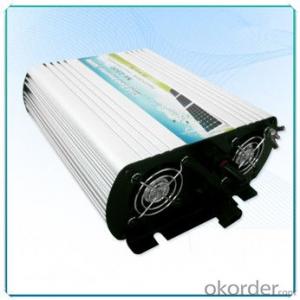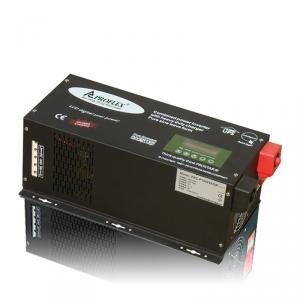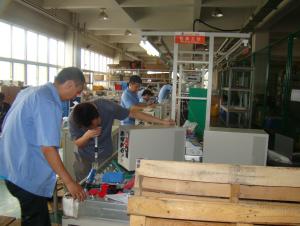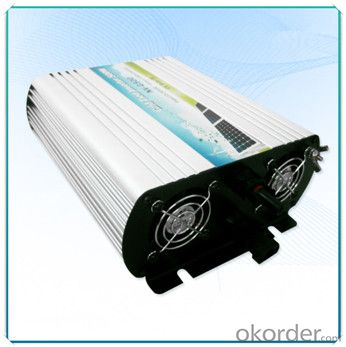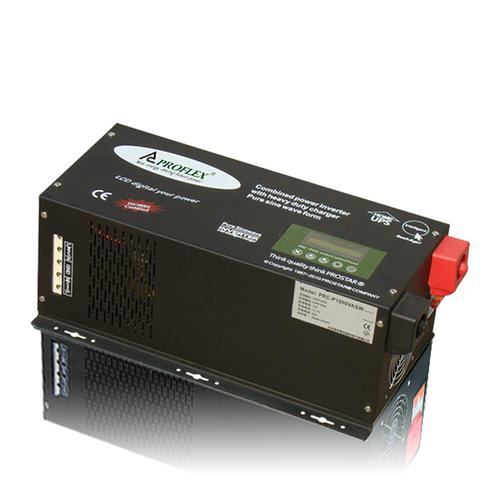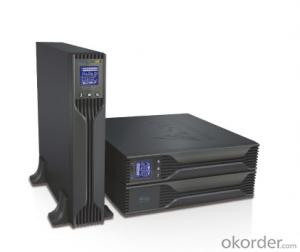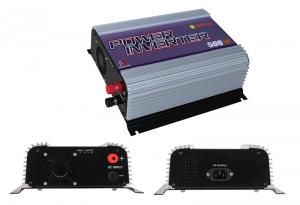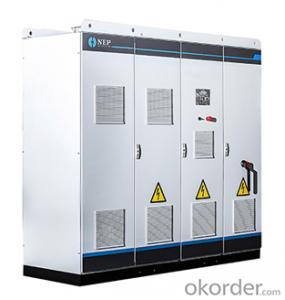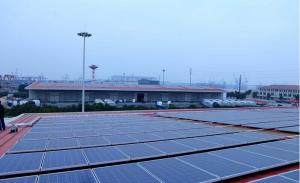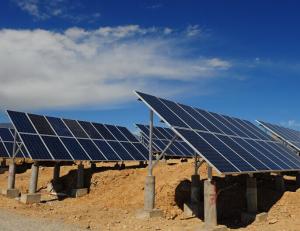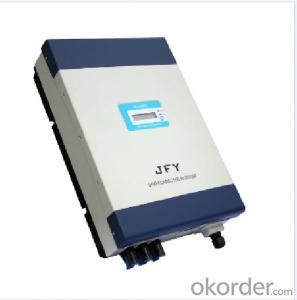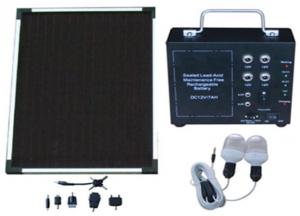500W Grid-Tied Solar Energy System Power Inverter
- Loading Port:
- Tianjin
- Payment Terms:
- TT OR LC
- Min Order Qty:
- 100 pc
- Supply Capability:
- 10000 pc/month
OKorder Service Pledge
OKorder Financial Service
You Might Also Like
Specification
Specifications
DC input:10.8~28VDC
AC output:120/230VAC
output power:500w
socket:Universal,USA,Australia,U.K,France,Germany etc
Type | Solar On-grid | Wind On-grid | ||||
Rated Power | 300W | 500W | 1000W | 300W | 500W | 1000W |
Maximum input current ( DC ) | 350W | 550W | 1200W | 400W | 600W | 1200W |
DC Maximum Input | 12.5A | 21A | 42A | 12.5A | 21A | 42A |
DC Maximum Voltage | 30V | 32V | ||||
DC Voltage Range | 15V~30V | 23V~32V | ||||
Input Connection | MC4 Connectors or DC Terminals | |||||
Maximum Output Power Factor | 99% | |||||
Anti-voltage Protection | Fuse | |||||
Output Short -circuit Protection | Current Limiting | |||||
AC Standard Voltage Range | 90V-140 VAC / 180~260VAC | |||||
AC Frequency Range | 55Hz~63Hz / 45Hz~53Hz | |||||
Output Current Total Harmonic Distortion | THDIAC < 5% | |||||
Phase Error | < 1% | |||||
Islanding Protection | VAC; f AC | |||||
Ambient Temperature Range | -25 °C ~ 60°C | |||||
Humidity | 0~99% ( Indoor Design ) | |||||
Waterproof | Indoor Design | |||||
Cooling Way | Cooling Fan | |||||
Electromagnetic Compatibility | EN50081.part1 EN50082.part1 | |||||
Power System Disturbance | EN61000-3-2 EN62109 | |||||
Network test | DIN VDE 1026 | |||||
Product Size | 22*17.5*8cm | |||||
QTY/Ctn | 10Pcs | |||||
Carton Size /Weight | 66.5*35.8*49cm , 22Kgs | |||||
(1) High converting efficiency higher than 97%
(2) Built-in MPPT tracker is equipped in the power inverter to optimize the power transformation
(3) Reversed current protection for preventing equipment damage
(4) Automatic battery temperature compensation for long-term reliability
(5) The solar charge controller is suitable for various types of batteries for the different charging modes
(6) Capable of connecting additional DC load for wider applications
(7) Three stage charge control system (bulk, absorption, and float mode) with temperature compensation
(8) LED indicators display charge status in real time
(9) Pulse Width Modulation (PWM) topology combined with a multi-stage charge control algorithm leads to superior charging and enhanced battery performance



Q 1. what's the payment term?
A. We accept TT,30% deposit and 70% balance agaisnt copy of BL
Q 2. how's the delivery time ?
A. usually it will take about 25 days for production
Q 3. tell me the standard of package?
A. For the small capacity, it use carton, but for big capacity, we should use strong wooden case for protection.
Q 4. what kind of material of transformer?
A. we have two types, one 100% copper and the other is copper with aluminum.It depends on your requirment. In fact,those two have no difference if normal work well. Only except the longlife. Copper is better and also higer price.
- Q: Can a solar energy system be used in areas with high humidity?
- Yes, a solar energy system can be used in areas with high humidity. While it is true that high humidity can affect the performance of a solar energy system to some extent, modern solar panels are designed to withstand various weather conditions, including high humidity. The efficiency of solar panels may decrease slightly in high humidity due to the moisture in the air, but it is not a significant factor that would render solar energy systems ineffective. Additionally, proper maintenance and cleaning of the panels can help mitigate any potential issues caused by humidity. Overall, solar energy systems can still be effectively utilized in areas with high humidity.
- Q: What are the devices needed for PV systems?
- Battery pack. The utility model is used for storing the electric energy generated by the solar array when illuminated by the light and can supply power to the load at any time. In the grid connected solar power generation system, the battery can not be added
- Q: Do solar energy systems require specialized insurance?
- Yes, solar energy systems typically require specialized insurance due to the unique risks associated with their installation and operation.
- Q: What is the impact of air pollution on solar panel efficiency?
- Air pollution can significantly reduce the efficiency of solar panels by blocking or scattering sunlight, leading to decreased energy production. The presence of particulate matter, such as dust, smog, or soot, on the surface of solar panels reduces the amount of sunlight that can penetrate and reach the photovoltaic cells, thus hindering their ability to convert sunlight into electricity. Additionally, air pollution can create a layer of dirt or grime on the panels, further diminishing their efficiency. Regular cleaning and maintenance of solar panels are essential to mitigate the impact of air pollution and ensure optimal energy generation.
- Q: Can solar energy systems be used for powering electric vehicle charging infrastructure?
- Certainly, solar energy systems can be utilized to power electric vehicle (EV) charging infrastructure. Solar power, as a clean and renewable energy source, can be harnessed through the utilization of photovoltaic (PV) panels. These panels can be installed on various surfaces such as rooftops, carports, or open fields, and their function is to convert sunlight into electricity. The electricity generated by solar panels can serve two purposes: directly charging EVs or powering the EV charging infrastructure, which includes charging stations, grid-tied DC fast chargers, or battery storage systems. By employing solar power for EV charging, we can make substantial reductions in greenhouse gas emissions and decrease our reliance on fossil fuels. Solar-powered EV charging infrastructure offers numerous advantages. Firstly, it aids in the reduction of the carbon footprint associated with transportation by utilizing clean energy instead of relying on grid electricity, which often originates from fossil fuel sources. Secondly, it allows for decentralized energy production, enabling EV owners to charge their vehicles using on-site renewable energy. This eases the burden on the electric grid and promotes energy independence. Moreover, solar EV charging infrastructure can be combined with energy storage systems, such as batteries. This enables excess solar energy generated during the day to be stored and used for EV charging during the night or when sunlight is unavailable. Battery storage also helps manage peak demand and ensures a more stable and reliable power supply for the charging infrastructure. The implementation of solar-powered EV charging infrastructure is a global trend that is gaining momentum. Both public and private entities are installing solar panels at charging stations, parking lots, and highways, providing sustainable and cost-effective charging options for EV owners. Additionally, government incentives and subsidies are often available to encourage the adoption of solar energy and EVs. In conclusion, solar energy systems can be effectively utilized to power electric vehicle charging infrastructure. This combination offers a sustainable and clean solution for transportation, reduces carbon emissions, and promotes energy independence.
- Q: Are there any insurance considerations for solar energy systems?
- Yes, there are insurance considerations for solar energy systems. Installing a solar energy system typically requires additional insurance coverage to protect against any potential damages or accidents. This can include coverage for the solar panels themselves, liability coverage for any injuries or property damage caused by the system, and potential business interruption coverage in case the system fails or is damaged. It is important for homeowners, businesses, and solar energy providers to consult with their insurance providers to ensure they have the appropriate coverage in place.
- Q: Can solar energy systems be used in powering movie theaters or entertainment venues?
- Certainly, movie theaters and entertainment venues can absolutely utilize solar energy systems to provide power. The operation of these venues requires a substantial amount of electricity for their lighting, sound systems, projectors, and other equipment. Solar energy systems have the ability to generate clean and renewable electricity by harnessing the sun's power. By installing solar panels on the roofs or in the surrounding areas of these venues, they can generate a significant amount of electricity to fulfill their energy requirements. Not only can solar energy systems be designed to supply power for the basic infrastructure of movie theaters or entertainment venues, but they can also support additional energy-intensive features such as HVAC systems, concession stands, and even electric vehicle charging stations. By utilizing solar energy, these venues can greatly reduce their dependence on grid electricity, decrease operational expenses, and contribute to a more sustainable and environmentally friendly future. Besides the practical advantages, the installation of solar energy systems in movie theaters or entertainment venues can also serve as a demonstration of environmental responsibility and attract environmentally conscious audiences. Many individuals are becoming increasingly aware of the significance of renewable energy, and by showcasing their commitment to sustainability, these venues can enhance their brand image and appeal to a wider customer base. In conclusion, the utilization of solar energy systems to power movie theaters or entertainment venues is not only technically viable but also financially and environmentally beneficial. By harnessing the sun's power, these venues can diminish their carbon footprint, save on energy costs, and contribute to a greener future for the entertainment industry.
- Q: How do solar energy systems affect the installation of satellite dishes?
- Solar energy systems can potentially affect the installation of satellite dishes by obstructing the line of sight between the dish and the satellite. It is important to carefully plan and position both the solar panels and satellite dish to ensure they do not interfere with each other.
- Q: Can solar energy systems be used for powering signs or billboards?
- Yes, solar energy systems can definitely be used for powering signs or billboards. In fact, solar power is an excellent choice for such applications due to its numerous advantages. Solar energy systems consist of solar panels that convert sunlight into electricity, which can be used to power various devices and appliances, including signs and billboards. One of the key benefits of using solar energy for powering signs or billboards is that it is a clean and renewable source of energy. Solar power does not produce any harmful emissions or pollutants, making it an environmentally friendly option. This is particularly important for outdoor signs and billboards that are often located in public areas. Moreover, solar energy systems are highly reliable and require minimal maintenance. Once installed, the solar panels can generate electricity for many years with very little upkeep. This makes solar power an ideal choice for signs or billboards that need to operate continuously or for extended periods without interruption. Furthermore, solar energy systems can be installed in various sizes and configurations, allowing for flexibility in design and placement of signs or billboards. Solar panels can be mounted on rooftops, poles, or even integrated into the design of the sign itself. This versatility makes solar power a suitable option for both new installations and retrofitting existing signs or billboards with solar panels. From an economic standpoint, solar energy can also provide long-term cost savings. While the initial installation costs may be higher compared to traditional electrical connections, solar power eliminates the need for ongoing electricity bills. Once the system is in place, the energy generated by the solar panels is essentially free, resulting in significant savings over time. In conclusion, solar energy systems can certainly be used to power signs or billboards. The clean and renewable nature of solar power, combined with its reliability, low maintenance requirements, and design flexibility, make it a highly suitable and sustainable choice for such applications.
- Q: Can solar energy systems be used in commercial or industrial applications?
- Yes, solar energy systems can definitely be used in commercial or industrial applications. In fact, many businesses and industries around the world are increasingly adopting solar energy systems to power their operations. These systems can be installed on rooftops, parking lots, or ground-mounted, providing a reliable and sustainable source of electricity. Not only does solar energy help businesses reduce their carbon footprint and lower their energy costs, but it also provides them with long-term energy independence and resilience.
Send your message to us
500W Grid-Tied Solar Energy System Power Inverter
- Loading Port:
- Tianjin
- Payment Terms:
- TT OR LC
- Min Order Qty:
- 100 pc
- Supply Capability:
- 10000 pc/month
OKorder Service Pledge
OKorder Financial Service
Similar products
Hot products
Hot Searches
Related keywords
